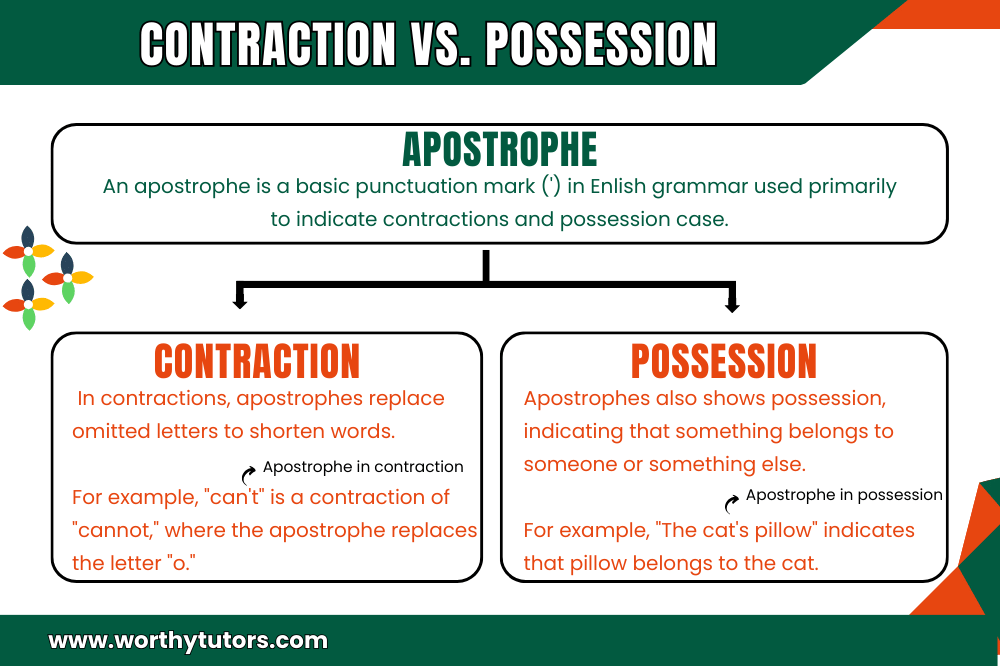
Punctuation Marks in English Grammar
What are punctuation marks?
Punctuation marks are the signs used in writing to make it more clear and precise. These marks or signs help the writer to pause, stop or separate sentences. They also help the writer to put emphasis on a certain part of a text. The use of punctuation makes the texts compelling to read by clarifying their meanings.
How many punctuation marks are there in English grammar?
There are fourteen punctuation marks in English Grammar. These punctuation marks are very important in making a written piece of text clear and credible to read. The following is a list of punctuation marks used in English grammar, which we shall discuss in detail.
- Period
- Question mark
- Exclamation mark
- Comma
- Colon
- Semicolon
- Parenthesis
- Brackets
- Braces
- Dashes
- Hyphen
- Quotation marks
- Apostrophe
- Ellipsis
PUNCTUATION MARK # 1 – THE PERIOD ( . )
Period “.” Is the most important and undeniably the most crucial punctuation mark when you are considering writing something. It puts an end to a sentence where needed. Not even a single sentence in the English language can be written without this particular punctuation mark.
Sentences like declarative sentences and imperative sentences are bound to end with a period. For example,
Declarative Sentences
- Helen went on a study trip to Russia.
- I left my car keys inside the car.
Imperative Sentences
- Please get me a glass of water.
- Talk to the manager about the new recruitment.
We also always put a period after an abbreviation in American English. For example,
- Mister becomes Mr.
- Miss into Ms.
- Doctor changes into Dr.
- Professor changes into Prof.
- General changes into Gen.
- Saint into St.
- Major changes to Maj.
- Captain becomes Capt.
PUNCTUATION MARK # 2 – QUESTION MARKS ( ? )
As the name suggests, a question mark is put at the end of an interrogative sentence. A question without a question mark is not complete. For example,
- Where have you been all these years?
- Are Hanna and Liam coming to the party tonight?
- Will I ever be able to complete my work on time?
PUNCTUATION MARK # 3 – EXCLAMATION MARKS ( ! )
As obvious from the name, exclamation marks are used after every exclamatory sentence, sentences that are uttered because of strong feelings and emotions. These emotions can be sad, happy, angry or excited. For example,
- We have broken the previous records of winning the most awards this year!
- The thought of losing a pet is overwhelming!
- I cannot wait to see you tomorrow!
Exclamation marks help put emphasis on a specific part of the text and allow the reader to infer the emotions of the speaker.
PUNCTUATION MARK # 4 – COMMA ( , )
A comma is used to separate items in a sentence. For example,
- I need to go to the grocery store to buy some milk, eggs, butter, and bread.
Note: The comma before the word and in the last sentence is known as an Oxford.
A pair of commas can also be used to separate additional information in a sentence. For example,
Helen, the girl with brown hair, has shown an exemplary performance in all the subjects this year.
PUNCTUATION MARK # 5 – COLON ( : )
A colon is used to introduce a list, an example, an explanation or a quotation. For example,
- Teacher: Do not leave the class without permission.
- Diane wished to visit three countries last year: France, Italy, and Germany.
- Item needed:
– Scissors
– Colored paper
– Glue Stick
– Markers
PUNCTUATION MARK # 6 – SEMICOLON ( ; )
A semicolon is used to join two independent clauses, that are closely related in thought. For example,
- I did not want to eat vegetables; I ordered a pizza instead.
A semicolon is also used between a list when the items themselves have commas in it. For example,
- Sarah and Ali went to Paris, Marseille and Cannes in France; Rome, Venice and Naples in Italy; Cairo, Alexandria and Luxor in Egypt; and Cape Town, Durban and Johannesburg in South Africa last year.
PUNCTUATION MARK # 7 – PARENTHESES ( )
Parentheses are used to separate additional information in a sentence. For example
- The scenic views of Switzerland (a heaven on earth) are breathtakingly beautiful.
- The doctor (whom I met yesterday) is a child specialist.
Note: Remember to be careful with the structure of the sentence. The sentence should stand on its own if the additional information is removed.
PUNCTUATION MARK # 8 – BRACKETS ( [ ] )
A pair of brackets are used to clarify information about a subject in a sentence. Unlike parenthesis, they enclose a word only, instead of a sentence. For example,
- He [Leonard] is crazy about cars and automobiles.
Brackets are also used to enclose translation of a foreign language. For example,
- The only Spanish I could learn in the past two months is, cómo está [How are you doing?]
Brackets are also used to notate a grammatical error in a sentence. For example,
- I [has] been to Europe many times.
PUNCTUATION MARK # 9 – BRACES ( { } )
Braces, often called curly brackets, is a rarely used punctuation mark. It can be used to indicate a list of choices. For example,
- Choose one of the three options {baseball, football, basketball}.
PUNCTUATION MARK # 10 – DASHES ( _ )
Dashes are divided into two types. EM Dashes and EN example
EM Dashes
EM dashes too are used for several purposes. They can either be used to separate additional information in the sentence as parentheses. For example,
- Pamela’s manager, Katie Thompson, is going on a leave next Friday.
Or, they can be used to indicate a sudden change of thought. For example,
- I hate going to work! – Oh did Liam call you for the apology then?
EM dashes are also used to create emphasis. For example,
- My brother goes to school – My sister goes to college.
EN Dashes
EN dashes can be used to indicate scores, for example,
- The score of the match is 1-4
A period of time, for example,
- The Mughal empire stretched across India and Pakistan from 1526-1857
A range of numbers, for example,
- I should’ve chosen a number from 25-40
Or, a distance. For example,
- USA-Japan is almost 13 hours long flight.
PUNCTUATION MARK # 11 – HYPHEN ( – )
Hyphens are smaller than dashes. A hyphen is used to connect two words. For example,
- Ice-cream
- Twenty-nine
- Good-looking
They are also used to link a prefix to a word sometimes. For example,
- Co-operation
- Re-imbursement
- Ultra-Violet
- Semi-detached
PUNCTUATION MARK # 12 – APOSTROPHE ( ‘ )
Apostrophe has a wide use in English grammar. It serves two purposes. An apostrophe can either show a possession or can be used in contracting words.
To show a possession of a singular noun, we add apostrophe and an -s to the noun. For example,
- Roger’s school uniform does not fit him anymore.
To show a possession of a plural noun, we add apostrophe after the s the noun (only if the noun ends in -s). For example,
- I have properly cleaned and polished all cars’ windows.
The rule is the same for plural nouns as it is for the singular nouns, if they do not end with an -s. For example,
- The children’s bags these days are quite heavy.
We also use apostrophes for contractions. For example,
- Does not > Doesn’t
- Will not > Won’t
- Do not > Don’t
- Shall not > Shan’t
- Ought not > Oughtn’t
- Are not > Aren’t
- Am not > Ain’t
- Must not > Mustn’t
PUNCTUATION MARK # 13 – QUOTATION MARKS ( “ )
As the name suggests, quotation marks or speech marks are used to enclose a quote or a dialogue. For example,
- Sam and Helen said, “We will not be drinking sodas anymore.’
- John asked, “When can I put the books back?”
PUNCTUATION MARK # 14 – ELLIPSIS (…)
Ellipsis is a set of three dots. It is used to reduce the length of a sentence. For example,
Original Quote:
“If all else perished, and he remained, I should still continue to be; and if all else remained, and he were annihilated, the universe would turn to a mighty stranger.”
Altered quote
“If all else perished, and he remained … the universe would turn to a mighty stranger.
Ellipsis can also be used to indicate hesitation in a sentence. For example,
- I … I don’t know how to react in such situation.
You Might Be Interested In
- Parts of Speech in English Grammar
- What are Modal Verbs? Types and Examples
- Types of Affixes in English Grammar
- Definition, Examples, and Types of Clauses
- Prepositions in English Grammar
- Gerund, Verbal Noun &Present Participle
- Content Words Vs Function Words
- 50 Basic Rules of Grammar
Merriam-Webster’s / Oxford Learner’s


